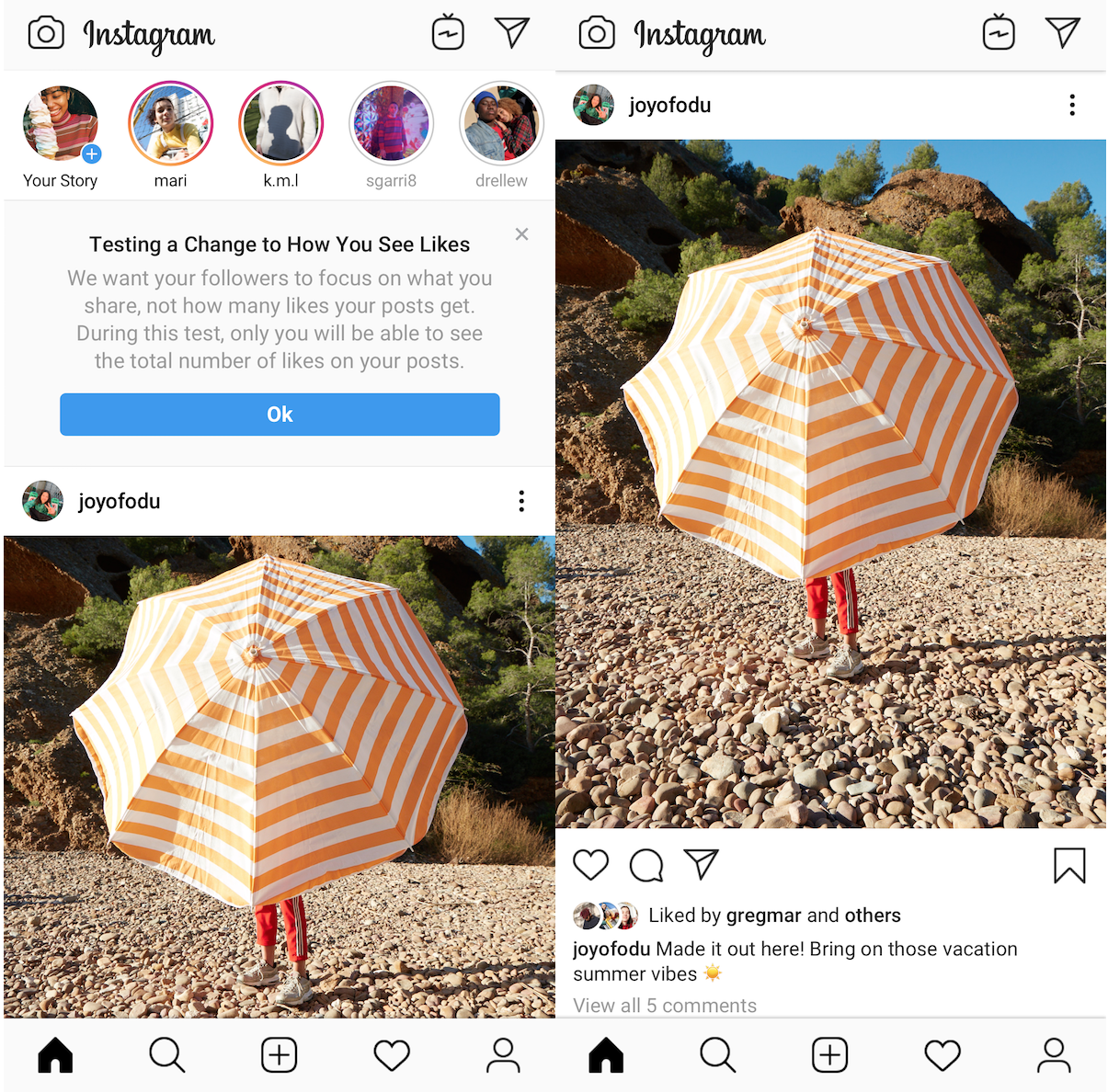Instagram is making Like counts private for some users everywhere. Instagram tells TechCrunch the hidden Likes test is expanding to a subset of people globally. Users will have to decide for themselves if something is worth Liking rather than judging by the herd. The change could make users more comfortable sharing what’s important to them without the fear of publicly receiving an embarrassingly small number of Likes.
Instagram began hiding Likes in April in Canada, then brought the test to Ireland, Italy, Japan, Brazil, Australia and New Zealand in July. Facebook started a similar experiment in Australia in September. Instagram said last week the test would expand to the U.S., but now it’s running everywhere to a small percentage of users in each country. Instagram tweets that feedback to the experiment so far has been positive, but it’s continuing to test because it’s such a fundamental change to the app.

Instagram wants its app to be a place people feel comfortable expressing themselves, and can focus on photos and videos they share rather than how many Likes they get, a spokesperson tells TechCrunch. Users can still see who Liked their own posts and a total count by tapping on the Likers list. Viewers of a post will only see a few names of mutual friends who Liked it. They can tap through to view the Likers list but would have to manually count them.
The expansion raises concerns that the test could hurt influencers and creators after a study by HypeAuditor found many of them of various levels of popularity lost 3% to 15% of their Likes in countries where Instagram hid the counts.

Instagram tells me it understands Like counts are important to many creators, and it’s actively working on ways that influencers will be able to communicate their value to partners. As Like counts won’t be public, influencer marketing agencies must rely on self-reported screenshots from creators that could be Photoshopped to score undue rewards.
Without even privately visible counts, agencies won’t be able verify a post got enough engagement to warrant payment. Instagram may need to offer some sort of private URL, partner dashboard or API creators can share with agencies that reveals Like counts.
Instagram CEO Adam Mosseri said last week at Wired25 that “We will make decisions that hurt the business if they help people’s well-being and health.” Hidden Like counts might reduce overall ad spend on Instagram if businesses feel it’s less important to rack up engagement and look popular. But it might also shift spend from influencer marketing that goes directly into the pockets of creators toward official Instagram ads, thereby earning the company more money.
An Instagram spokesperson provided this statement to TechCrunch:
Starting today, we’re expanding our test of private like counts to the rest of the world beyond Australia, Brazil, Canada, Ireland, Italy, and New Zealand. If you’re in the test, you’ll no longer see the total number of likes and views on photos and videos posted to Feed unless they’re your own. While the feedback from early testing has been positive, this is a fundamental change to Instagram, and so we’re continuing our test to learn more from our global community.
This is perhaps the final step of testing before Instagram might officially launch the change and hide Like counts for all users everywhere. It’s surely watching closely to determine how the test improves mental health, but also how it impacts usage of the app.
Hiding Likes is probably a win for the sanity of humanity, and a boon to creativity. Before, people often self-censored and declined to share posts they worried wouldn’t get enough Likes, or deleted posts that didn’t. They’d instinctually bend their public persona toward manicured selfies and images that made their life look glamorous, rather than what was authentic or that they wanted to communicate. Meanwhile, viewers would see high Like counts on friends’ or influencers’ posts, compare those to their own smaller Like counts and feel ashamed or inadequate.

Putting an end to the popularity contest might lead people to share more unconventional, silly or artsy posts regardless of their public reception. That could make Instagram’s content more diverse, surprising and alluring over time versus an increasingly stale aesthetic of perfection. Hidden counts might also decrease the need for “Finstagram” accounts, aka fake Insta profiles that users spin up to share what might not receive as many Likes.
While Facebook is credited for inventing the Like button, it’s Instagram that institutionalized the red heart icon that Twitter eventually adopted, and codified public approval into a concentrated dopamine hit. Instagram turning against Like counts could start a larger shift in the social media industry toward prioritizing more qualitative enjoyment of sharing, instead of obsessing over the quantification of validation.


Recent Comments